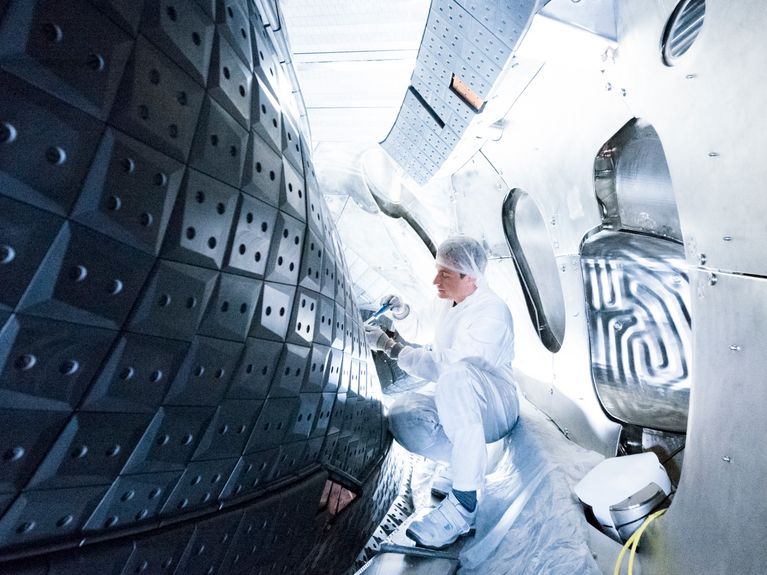
Challenge #23
Building a star machine for continuous operation.
To mimic the energy production of the sun and stars, the Helmholtz Fusion Program is working on the world’s most advanced stellarator: Wendelstein 7-X. Its task is to demonstrate continuous operation.
Participating centers
Wendelstein 7-X, the world’s largest and most advanced stellarator-type fusion facility, went into operation in Greifswald in 2015 and is intended to demonstrate the suitability of this alternative concept as a power plant. Unlike the many tokamaks in use, stellarators can operate continuously without complex additional measures. However, to do so, they require solenoids of much more complex shapes than those used in tokamaks. At Wendelstein 7-X, specially shaped superconducting coils generate a magnetic field that has been optimized to meet the requirements of a power plant. The quality of plasma confinement in a stellarator is thus expected to reach the level of a tokamak for the first time.
The experiments so far have already yielded record values for a stellarator plasma. Over the next few years, the Helmholtz Fusion Program will work toward the goal of discharges lasting 30 minutes, demonstrating the stellarator’s main advantage: its ability to operate continuously.
(Header: IPP/Jan Hosan)